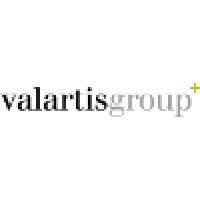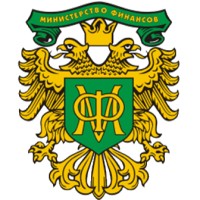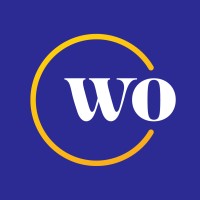
Valartis Group Company Cyber Security Posture
valartisgroup.chValartis Group is an international finance group with offices in Geneva, Zurich, Luxembourg, Moscow and St. Petersburg. Valartis Group AG, domiciled in Baar, Canton Zug, Switzerland, is the parent company of the Group. Valartis Group’s bearer shares are listed on SIX Swiss Exchange (ISIN CH0001840450). As a listed company, Valartis Group AG’s public shareholders, with a free float of 44.5 per cent of shares, and the majority shareholder, MCG Holding SA which holds 50.2 per cent of capital and voting rights, represent important stakeholders. The remaining shares are held directly by the company. The holding company’s business model is based on four core competencies in financial services, real estate investments, project management and corporate finance. The operational focus is active management of own participations, management of third-party assets, corporate finance advisory, M&A and capital markets. Valartis Group is developing and launching innovative investment projects - we are targeting income-oriented majority and minority participations in selected opportunities. At the end of 2016, Valartis employed in total 59 staff members in the Swiss front offices and service organization, in the Russian real estate administration in Moscow and St. Petersburg and in Luxemburg. The Board of Directors of Valartis Group consists of the following members: - Gustav Stenbolt, Chairman & Delegate of the Board of Directors - Christoph N. Meister, Vice-Chairman - Philipp LeibundGut, Member The Executive Management of Valartis includes the following members: - Gustav Stenbolt, Group CEO - George Isliker, Group CFO/CRO
Valartis Group Company Details
valartis-group
30 employees
746
52
Financial Services
valartisgroup.ch
Scan still pending
VAL_3239694
In-progress
Between 800 and 900
This score is AI-generated and less favored by cyber insurers, who prefer the TPRM score.
 Valartis Group Global Score
Valartis Group Global Score.png)

Valartis Group Company Scoring based on AI Models
| Model Name | Date | Description | Current Score Difference | Score |
|---|---|---|---|---|
| AVERAGE-Industry | 03-12-2025 | This score represents the average cybersecurity rating of companies already scanned within the same industry. It provides a benchmark to compare an individual company's security posture against its industry peers. | N/A | Between 800 and 900 |
Valartis Group Company Cyber Security News & History
| Entity | Type | Severity | Impact | Seen | Url ID | Details | View |
|---|---|---|---|---|---|---|---|
| Valartis Group | Breach | 100 | 11/2016 | VAL204551123 | Link | ||
Rankiteo Explanation : Attack threatening the organization's existenceDescription: Hackers attempted to profit from their initial breach of Valartis Bank Liechtenstein by threatening to reveal critical customer data. The sensitive nature of the data that thieves are stealing makes the situation very worrisome. In reality, it is said that cybercriminals are using the threat of releasing account data to coerce victims into not paying ransom payments. According to reports, the cybercriminals are requesting up to 10% of account balances in order to keep client information private. The media-published letters verify the hacker's plan to use threats of exposing purportedly improper activities, such as tax avoidance, as a means of blackmailing the victims. | |||||||
Valartis Group Company Subsidiaries

Valartis Group is an international finance group with offices in Geneva, Zurich, Luxembourg, Moscow and St. Petersburg. Valartis Group AG, domiciled in Baar, Canton Zug, Switzerland, is the parent company of the Group. Valartis Group’s bearer shares are listed on SIX Swiss Exchange (ISIN CH0001840450). As a listed company, Valartis Group AG’s public shareholders, with a free float of 44.5 per cent of shares, and the majority shareholder, MCG Holding SA which holds 50.2 per cent of capital and voting rights, represent important stakeholders. The remaining shares are held directly by the company. The holding company’s business model is based on four core competencies in financial services, real estate investments, project management and corporate finance. The operational focus is active management of own participations, management of third-party assets, corporate finance advisory, M&A and capital markets. Valartis Group is developing and launching innovative investment projects - we are targeting income-oriented majority and minority participations in selected opportunities. At the end of 2016, Valartis employed in total 59 staff members in the Swiss front offices and service organization, in the Russian real estate administration in Moscow and St. Petersburg and in Luxemburg. The Board of Directors of Valartis Group consists of the following members: - Gustav Stenbolt, Chairman & Delegate of the Board of Directors - Christoph N. Meister, Vice-Chairman - Philipp LeibundGut, Member The Executive Management of Valartis includes the following members: - Gustav Stenbolt, Group CEO - George Isliker, Group CFO/CRO
Access Data Using Our API

Get company history
.png)
Valartis Group Cyber Security News
The Board of Directors of Valartis Group nominates Gustav Stenbolt for election as Chairman of the Board of Directors at the Annual General Meeting 2015. Stephan Häberle is designated as Group CEO.
From 3 June, 2015, the Board of Directors of Valartis Group AG designates Stephan Häberle, member of the Board of Directors, as Group CEO.

Valartis Group Similar Companies

Natixis Corporate & Investment Banking
Natixis Corporate & Investment Banking is a leading global financial institution that provides advisory, investment banking, financing, corporate banking and capital markets services to corporations, financial institutions, financial sponsors and sovereign and supranational organizations worldwide.

Ministry of Finance of the Russian Federation
The Ministry of Finance (Minfin) is a federal executive body responsible for drafting and implementing government policy and legal regulation in the field of budget, tax, insurance, foreign exchange, banking, credit cooperatives, microfinance, financial markets, public debt, auditing, accounting and

DNB
We are here. So you can stay ahead. For nearly two hundred years we have acquired and shared knowledge, developed global networks and adapted to modern everyday life. To us, it is important to combine profitability with responsibility. DNB is Norway's largest financial services group and one of t

Global Payments Inc.
At Global Payments (NYSE : GPN), we empower simple, fast, secure payments for everyone. And to do that, we’ve built a complete, worldwide commerce ecosystem that delivers software and services at scale to millions of companies around the world—from ambitious startups to global enterprises. Our team

Motilal Oswal Financial Services Ltd
Motilal Oswal Financial Services Ltd. (MOFSL) was founded in 1987 as a small sub-broking unit, with just 2 people running the show. Focus on a customer-first attitude, ethical and transparent business practices, respect for professionalism, research-based value investing, and implementation of cutti

TMF Group
We provide employee, financial and legal administration so that firms can invest and operate safely around the world. TMF Group is a single global team with over 11,000 colleagues in more than 125 offices across 87 jurisdictions, covering 92% of world GDP and 95% of FDI inflow. We bring common c

Frequently Asked Questions (FAQ) on Cybersecurity Incidents
Valartis Group CyberSecurity History Information
Total Incidents: According to Rankiteo, Valartis Group has faced 1 incidents in the past.
Incident Types: The types of cybersecurity incidents that have occurred include ['Breach'].
Total Financial Loss: The total financial loss from these incidents is estimated to be {total_financial_loss}.
Cybersecurity Posture: The company's overall cybersecurity posture is described as Valartis Group is an international finance group with offices in Geneva, Zurich, Luxembourg, Moscow and St. Petersburg. Valartis Group AG, domiciled in Baar, Canton Zug, Switzerland, is the parent company of the Group. Valartis Group’s bearer shares are listed on SIX Swiss Exchange (ISIN CH0001840450). As a listed company, Valartis Group AG’s public shareholders, with a free float of 44.5 per cent of shares, and the majority shareholder, MCG Holding SA which holds 50.2 per cent of capital and voting rights, represent important stakeholders. The remaining shares are held directly by the company. The holding company’s business model is based on four core competencies in financial services, real estate investments, project management and corporate finance. The operational focus is active management of own participations, management of third-party assets, corporate finance advisory, M&A and capital markets. Valartis Group is developing and launching innovative investment projects - we are targeting income-oriented majority and minority participations in selected opportunities. At the end of 2016, Valartis employed in total 59 staff members in the Swiss front offices and service organization, in the Russian real estate administration in Moscow and St. Petersburg and in Luxemburg. The Board of Directors of Valartis Group consists of the following members: - Gustav Stenbolt, Chairman & Delegate of the Board of Directors - Christoph N. Meister, Vice-Chairman - Philipp LeibundGut, Member The Executive Management of Valartis includes the following members: - Gustav Stenbolt, Group CEO - George Isliker, Group CFO/CRO.
Detection and Response: The company detects and responds to cybersecurity incidents through {description_of_detection_and_response_process}.
Incident Details
Incident 1: Ransomware Attack
Title: {Incident_Title}
Description: {Brief_description_of_the_incident}
Date Detected: {Detection_Date}
Date Publicly Disclosed: {Disclosure_Date}
Date Resolved: {Resolution_Date}
Type: {Type_of_Attack}
Attack Vector: {Attack_Vector}
Vulnerability Exploited: {Vulnerability}
Threat Actor: {Threat_Actor}
Motivation: {Motivation}
Incident 2: Data Breach
Title: {Incident_Title}
Description: {Brief_description_of_the_incident}
Date Detected: {Detection_Date}
Date Publicly Disclosed: {Disclosure_Date}
Date Resolved: {Resolution_Date}
Type: {Type_of_Attack}
Attack Vector: {Attack_Vector}
Vulnerability Exploited: {Vulnerability}
Threat Actor: {Threat_Actor}
Motivation: {Motivation}
Common Attack Types: As of now, the company has not encountered any reported incidents involving common cyberattacks.
Identification of Attack Vectors: The company identifies the attack vectors used in incidents through {description_of_identification_process}.
Impact of the Incidents
Incident 1: Ransomware Attack
Financial Loss: {Financial_Loss}
Data Compromised: {Data_Compromised}
Systems Affected: {Systems_Affected}
Downtime: {Downtime}
Operational Impact: {Operational_Impact}
Conversion Rate Impact: {Conversion_Rate_Impact}
Revenue Loss: {Revenue_Loss}
Customer Complaints: {Customer_Complaints}
Brand Reputation Impact: {Brand_Reputation_Impact}
Legal Liabilities: {Legal_Liabilities}
Identity Theft Risk: {Identity_Theft_Risk}
Payment Information Risk: {Payment_Information_Risk}
Incident 2: Data Breach
Financial Loss: {Financial_Loss}
Data Compromised: {Data_Compromised}
Systems Affected: {Systems_Affected}
Downtime: {Downtime}
Operational Impact: {Operational_Impact}
Conversion Rate Impact: {Conversion_Rate_Impact}
Revenue Loss: {Revenue_Loss}
Customer Complaints: {Customer_Complaints}
Brand Reputation Impact: {Brand_Reputation_Impact}
Legal Liabilities: {Legal_Liabilities}
Identity Theft Risk: {Identity_Theft_Risk}
Payment Information Risk: {Payment_Information_Risk}
Average Financial Loss: The average financial loss per incident is {average_financial_loss}.
Commonly Compromised Data Types: The types of data most commonly compromised in incidents are {list_of_commonly_compromised_data_types}.
Incident 1: Ransomware Attack
Entity Name: {Entity_Name}
Entity Type: {Entity_Type}
Industry: {Industry}
Location: {Location}
Size: {Size}
Customers Affected: {Customers_Affected}
Incident 2: Data Breach
Entity Name: {Entity_Name}
Entity Type: {Entity_Type}
Industry: {Industry}
Location: {Location}
Size: {Size}
Customers Affected: {Customers_Affected}
Response to the Incidents
Incident 1: Ransomware Attack
Incident Response Plan Activated: {Yes/No}
Third Party Assistance: {Yes/No}
Law Enforcement Notified: {Yes/No}
Containment Measures: {Containment_Measures}
Remediation Measures: {Remediation_Measures}
Recovery Measures: {Recovery_Measures}
Communication Strategy: {Communication_Strategy}
Adaptive Behavioral WAF: {Adaptive_Behavioral_WAF}
On-Demand Scrubbing Services: {On_Demand_Scrubbing_Services}
Network Segmentation: {Network_Segmentation}
Enhanced Monitoring: {Enhanced_Monitoring}
Incident 2: Data Breach
Incident Response Plan Activated: {Yes/No}
Third Party Assistance: {Yes/No}
Law Enforcement Notified: {Yes/No}
Containment Measures: {Containment_Measures}
Remediation Measures: {Remediation_Measures}
Recovery Measures: {Recovery_Measures}
Communication Strategy: {Communication_Strategy}
Adaptive Behavioral WAF: {Adaptive_Behavioral_WAF}
On-Demand Scrubbing Services: {On_Demand_Scrubbing_Services}
Network Segmentation: {Network_Segmentation}
Enhanced Monitoring: {Enhanced_Monitoring}
Incident Response Plan: The company's incident response plan is described as {description_of_incident_response_plan}.
Third-Party Assistance: The company involves third-party assistance in incident response through {description_of_third_party_involvement}.
Data Breach Information
Incident 2: Data Breach
Type of Data Compromised: {Type_of_Data}
Number of Records Exposed: {Number_of_Records}
Sensitivity of Data: {Sensitivity_of_Data}
Data Exfiltration: {Yes/No}
Data Encryption: {Yes/No}
File Types Exposed: {File_Types}
Personally Identifiable Information: {Yes/No}
Prevention of Data Exfiltration: The company takes the following measures to prevent data exfiltration: {description_of_prevention_measures}.
Handling of PII Incidents: The company handles incidents involving personally identifiable information (PII) through {description_of_handling_process}.
Ransomware Information
Incident 1: Ransomware Attack
Ransom Demanded: {Ransom_Amount}
Ransom Paid: {Ransom_Paid}
Ransomware Strain: {Ransomware_Strain}
Data Encryption: {Yes/No}
Data Exfiltration: {Yes/No}
Ransom Payment Policy: The company's policy on paying ransoms in ransomware incidents is described as {description_of_ransom_payment_policy}.
Data Recovery from Ransomware: The company recovers data encrypted by ransomware through {description_of_data_recovery_process}.
Regulatory Compliance
Incident 1: Ransomware Attack
Regulations Violated: {Regulations_Violated}
Fines Imposed: {Fines_Imposed}
Legal Actions: {Legal_Actions}
Regulatory Notifications: {Regulatory_Notifications}
Incident 2: Data Breach
Regulations Violated: {Regulations_Violated}
Fines Imposed: {Fines_Imposed}
Legal Actions: {Legal_Actions}
Regulatory Notifications: {Regulatory_Notifications}
Regulatory Frameworks: The company complies with the following regulatory frameworks regarding cybersecurity: {list_of_regulatory_frameworks}.
Ensuring Regulatory Compliance: The company ensures compliance with regulatory requirements through {description_of_compliance_measures}.
Lessons Learned and Recommendations
Incident 1: Ransomware Attack
Lessons Learned: {Lessons_Learned}
Incident 2: Data Breach
Lessons Learned: {Lessons_Learned}
Incident 1: Ransomware Attack
Recommendations: {Recommendations}
Incident 2: Data Breach
Recommendations: {Recommendations}
Key Lessons Learned: The key lessons learned from past incidents are {list_of_key_lessons_learned}.
Implemented Recommendations: The company has implemented the following recommendations to improve cybersecurity: {list_of_implemented_recommendations}.
References
Additional Resources: Stakeholders can find additional resources on cybersecurity best practices at {list_of_additional_resources}.
Investigation Status
Incident 1: Ransomware Attack
Investigation Status: {Investigation_Status}
Incident 2: Data Breach
Investigation Status: {Investigation_Status}
Communication of Investigation Status: The company communicates the status of incident investigations to stakeholders through {description_of_communication_process}.
Stakeholder and Customer Advisories
Incident 1: Ransomware Attack
Stakeholder Advisories: {Stakeholder_Advisories}
Customer Advisories: {Customer_Advisories}
Incident 2: Data Breach
Stakeholder Advisories: {Stakeholder_Advisories}
Customer Advisories: {Customer_Advisories}
Advisories Provided: The company provides the following advisories to stakeholders and customers following an incident: {description_of_advisories_provided}.
Initial Access Broker
Incident 1: Ransomware Attack
Entry Point: {Entry_Point}
Reconnaissance Period: {Reconnaissance_Period}
Backdoors Established: {Backdoors_Established}
High Value Targets: {High_Value_Targets}
Data Sold on Dark Web: {Yes/No}
Incident 2: Data Breach
Entry Point: {Entry_Point}
Reconnaissance Period: {Reconnaissance_Period}
Backdoors Established: {Backdoors_Established}
High Value Targets: {High_Value_Targets}
Data Sold on Dark Web: {Yes/No}
Monitoring and Mitigation of Initial Access Brokers: The company monitors and mitigates the activities of initial access brokers through {description_of_monitoring_and_mitigation_measures}.
Post-Incident Analysis
Incident 1: Ransomware Attack
Root Causes: {Root_Causes}
Corrective Actions: {Corrective_Actions}
Incident 2: Data Breach
Root Causes: {Root_Causes}
Corrective Actions: {Corrective_Actions}
Post-Incident Analysis Process: The company's process for conducting post-incident analysis is described as {description_of_post_incident_analysis_process}.
Corrective Actions Taken: The company has taken the following corrective actions based on post-incident analysis: {list_of_corrective_actions_taken}.
Additional Questions
General Information
Ransom Payment History: The company has {paid/not_paid} ransoms in the past.
Last Ransom Demanded: The amount of the last ransom demanded was {last_ransom_amount}.
Last Attacking Group: The attacking group in the last incident was {last_attacking_group}.
Incident Details
Most Recent Incident Detected: The most recent incident detected was on {most_recent_incident_detected_date}.
Most Recent Incident Publicly Disclosed: The most recent incident publicly disclosed was on {most_recent_incident_publicly_disclosed_date}.
Most Recent Incident Resolved: The most recent incident resolved was on {most_recent_incident_resolved_date}.
Impact of the Incidents
Highest Financial Loss: The highest financial loss from an incident was {highest_financial_loss}.
Most Significant Data Compromised: The most significant data compromised in an incident was {most_significant_data_compromised}.
Most Significant System Affected: The most significant system affected in an incident was {most_significant_system_affected}.
Response to the Incidents
Third-Party Assistance in Most Recent Incident: The third-party assistance involved in the most recent incident was {third_party_assistance_in_most_recent_incident}.
Containment Measures in Most Recent Incident: The containment measures taken in the most recent incident were {containment_measures_in_most_recent_incident}.
Data Breach Information
Most Sensitive Data Compromised: The most sensitive data compromised in a breach was {most_sensitive_data_compromised}.
Number of Records Exposed: The number of records exposed in the most significant breach was {number_of_records_exposed}.
Ransomware Information
Highest Ransom Demanded: The highest ransom demanded in a ransomware incident was {highest_ransom_demanded}.
Highest Ransom Paid: The highest ransom paid in a ransomware incident was {highest_ransom_paid}.
Regulatory Compliance
Highest Fine Imposed: The highest fine imposed for a regulatory violation was {highest_fine_imposed}.
Most Significant Legal Action: The most significant legal action taken for a regulatory violation was {most_significant_legal_action}.
Lessons Learned and Recommendations
Most Significant Lesson Learned: The most significant lesson learned from past incidents was {most_significant_lesson_learned}.
Most Significant Recommendation Implemented: The most significant recommendation implemented to improve cybersecurity was {most_significant_recommendation_implemented}.
References
Most Recent Source: The most recent source of information about an incident is {most_recent_source}.
Most Recent URL for Additional Resources: The most recent URL for additional resources on cybersecurity best practices is {most_recent_url}.
Investigation Status
Current Status of Most Recent Investigation: The current status of the most recent investigation is {current_status_of_most_recent_investigation}.
Stakeholder and Customer Advisories
Most Recent Stakeholder Advisory: The most recent stakeholder advisory issued was {most_recent_stakeholder_advisory}.
Most Recent Customer Advisory: The most recent customer advisory issued was {most_recent_customer_advisory}.
Initial Access Broker
Most Recent Entry Point: The most recent entry point used by an initial access broker was {most_recent_entry_point}.
Most Recent Reconnaissance Period: The most recent reconnaissance period for an incident was {most_recent_reconnaissance_period}.
Post-Incident Analysis
Most Significant Root Cause: The most significant root cause identified in post-incident analysis was {most_significant_root_cause}.
Most Significant Corrective Action: The most significant corrective action taken based on post-incident analysis was {most_significant_corrective_action}.
What Do We Measure?
















Every week, Rankiteo analyzes billions of signals to give organizations a sharper, faster view of emerging risks. With deeper, more actionable intelligence at their fingertips, security teams can outpace threat actors, respond instantly to Zero-Day attacks, and dramatically shrink their risk exposure window.
These are some of the factors we use to calculate the overall score:
Identify exposed access points, detect misconfigured SSL certificates, and uncover vulnerabilities across the network infrastructure.
Gain visibility into the software components used within an organization to detect vulnerabilities, manage risk, and ensure supply chain security.
Monitor and manage all IT assets and their configurations to ensure accurate, real-time visibility across the company's technology environment.
Leverage real-time insights on active threats, malware campaigns, and emerging vulnerabilities to proactively defend against evolving cyberattacks.




